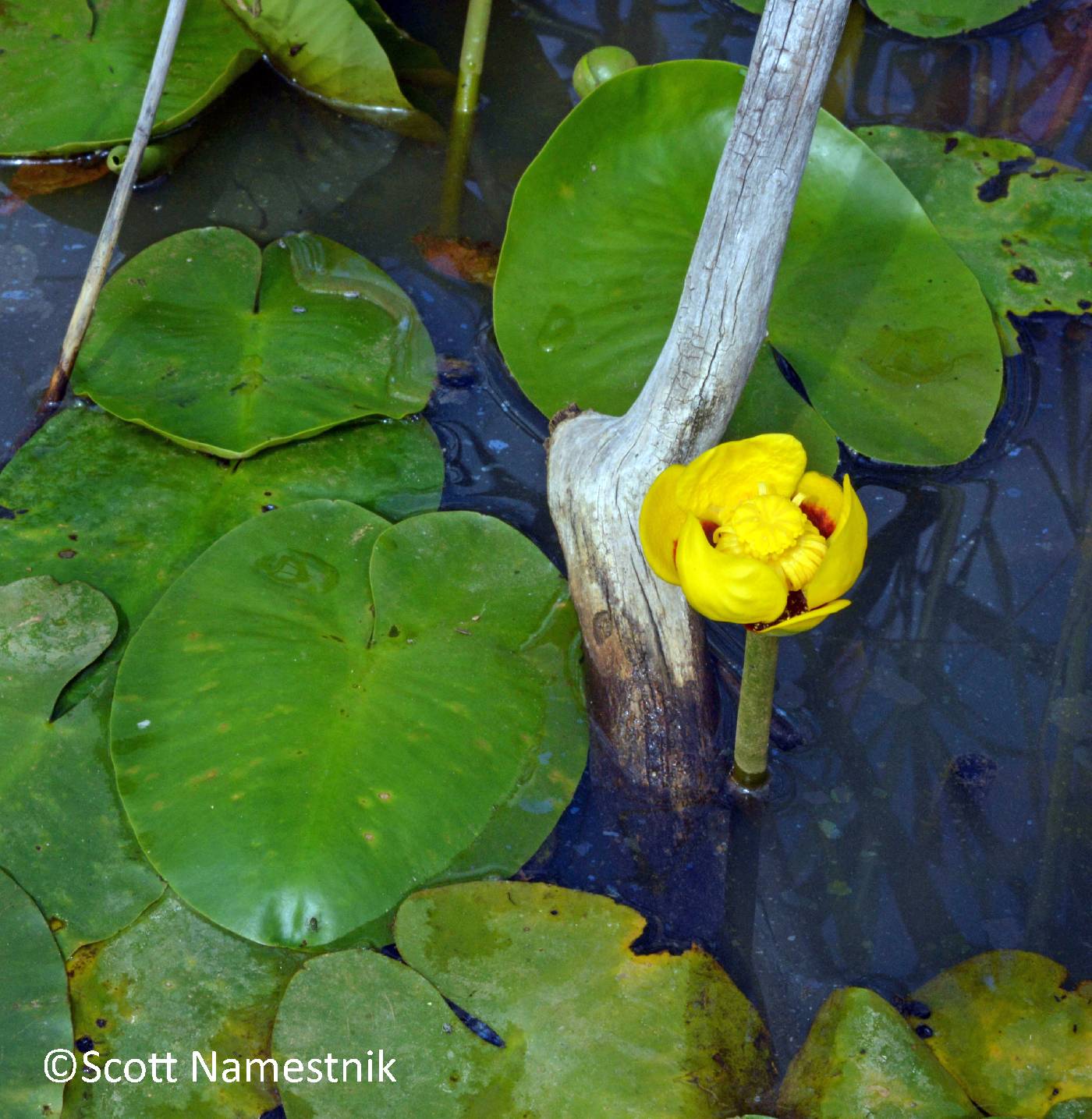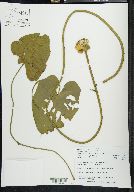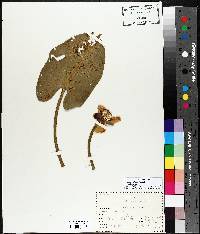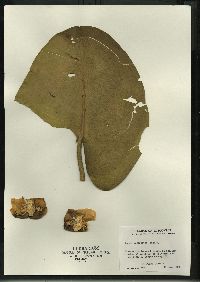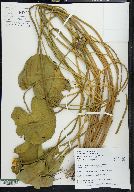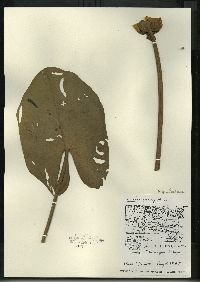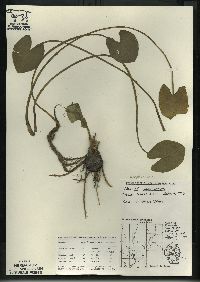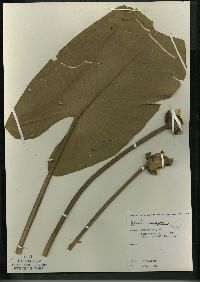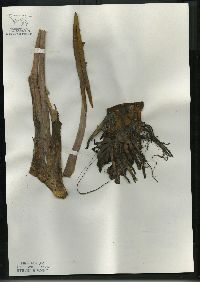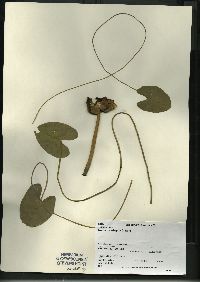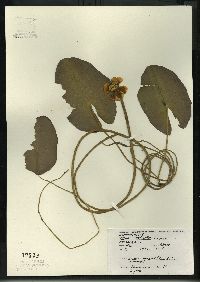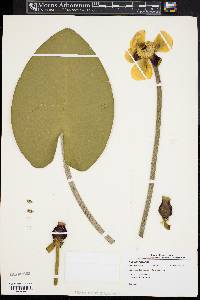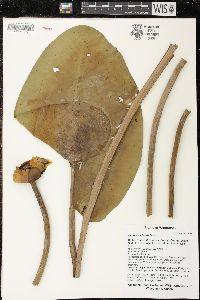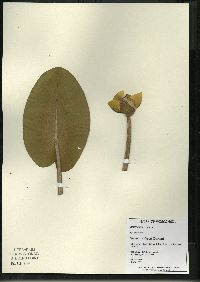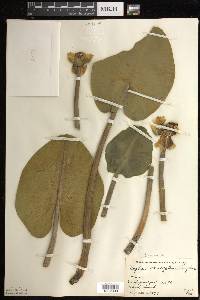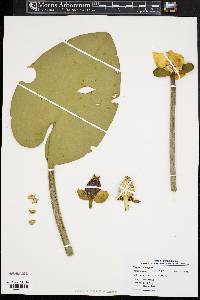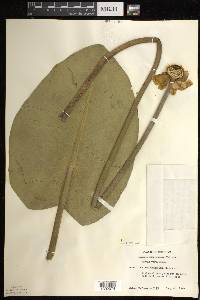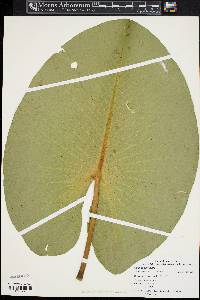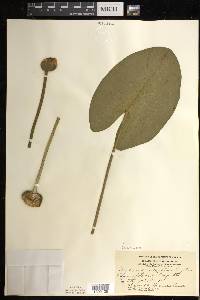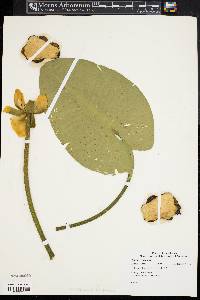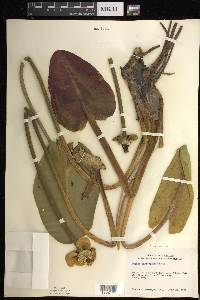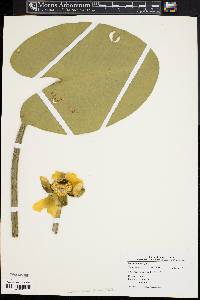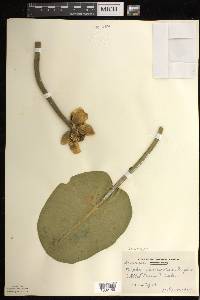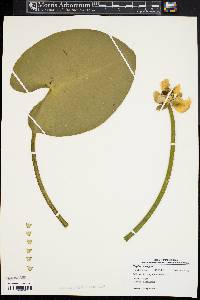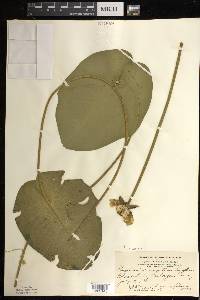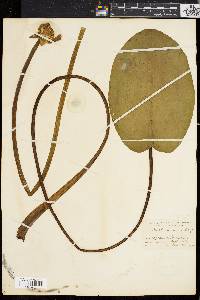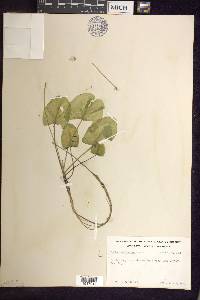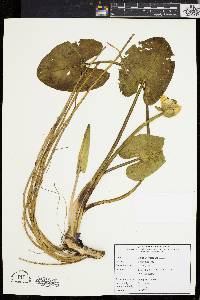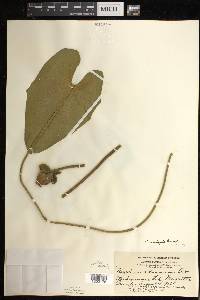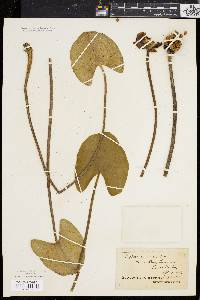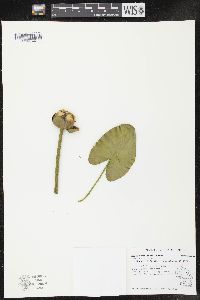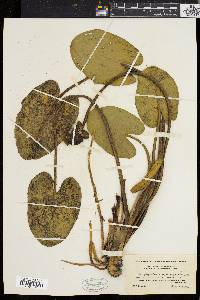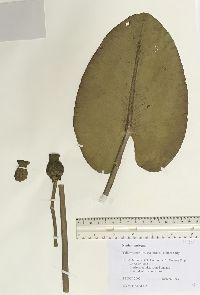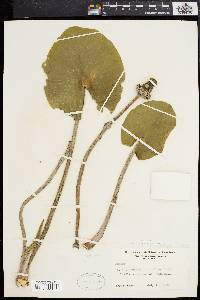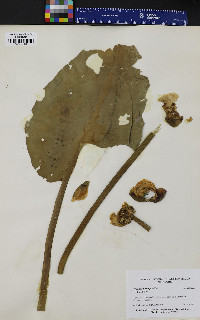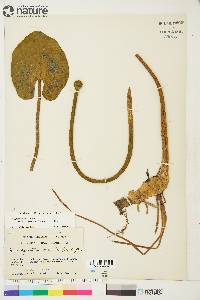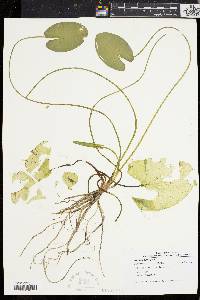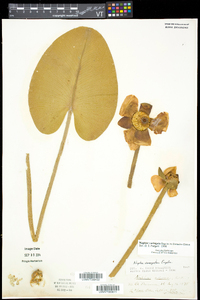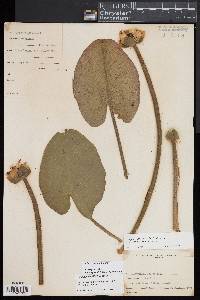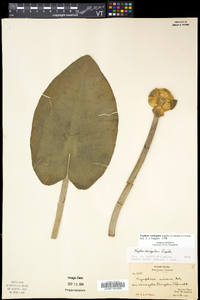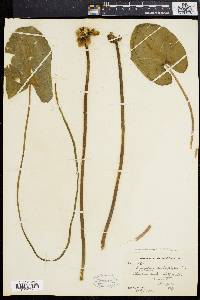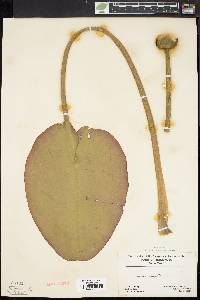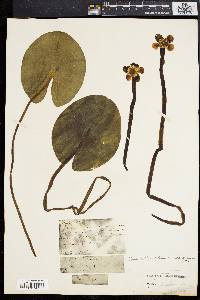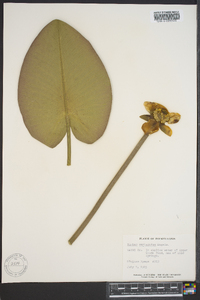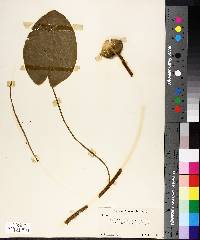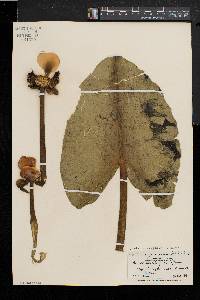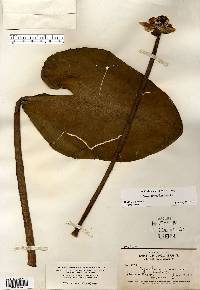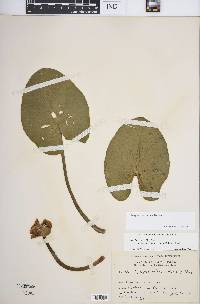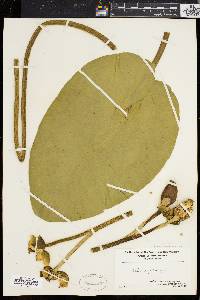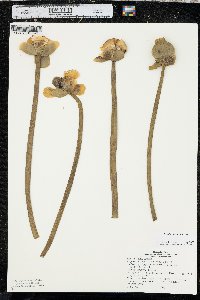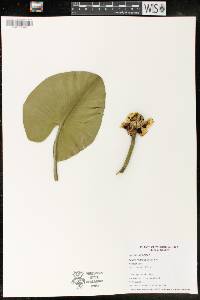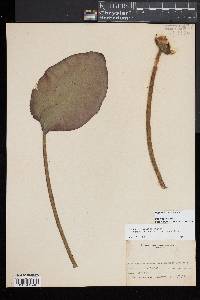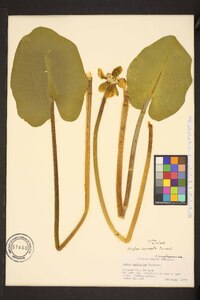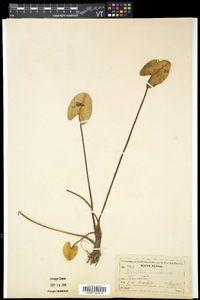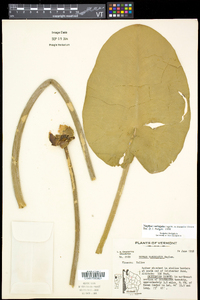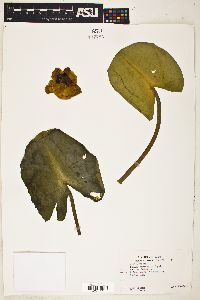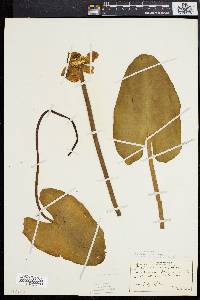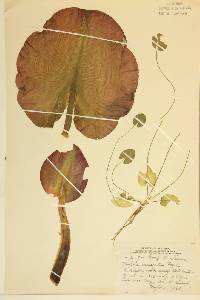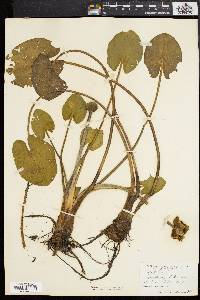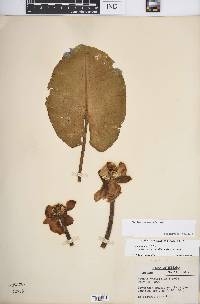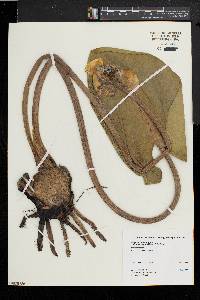
|
|
|
|
Family: Nymphaeaceae
Bullhead-Lily, more...varigated yellow pond-lily, varigated yellow pond-lily
[Nuphar advena var. fraterna (G.S. Mill. & Standl.) Standl., moreNuphar advena var. variegata Engelm., Nuphar fraterna , Nuphar fraternum (G. S. Mill. & Standl.) Standl., Nuphar lutea subsp. variegata (Durand) E.O. Beal, Nuphar luteum subsp. variegatum E.O. Beal, Nuphar luteum var. variegatum (Engelm. ex. Clinton) E.O. Beal, Nuphar variegatum Engelm., Nymphaea fraterna G.S. Mill. & Standl., Nymphozanthus variegatus (Durand) Fernald] |
Rhizomes 2.5-7 cm diam. Leaves mostly floating, occasionally submersed; petiole adaxially flattened, with median ridge, winged along margins. Leaf blade abaxially and adaxially green, sometimes abaxially purple-tinged, broadly ovate to oblong, 7-35 5-25 cm, 1.2-1.6 times as long as wide, sinus 1/3-1/2 length of midrib, lobes approximate to overlapping; surfaces glabrous. Flowers 2.5-5 cm diam.; sepals mostly 6, abaxially green to yellow, adaxially usually with red or maroon toward base; petals oblong, thick; anthers 3-9 mm, longer than filaments. Fruit mostly purple-tinged, ovoid, 2-4.3 2-3.5 cm, strongly ribbed, slightly constricted below stigmatic disk; stigmatic disk green, rarely reddened, 8-20 mm diam., entire to deeply crenate; stigmatic rays 7-28, linear to narrowly lanceolate, terminating 0-1(-1.5) mm from margin of disk. Seeds 2.5-5 mm. 2 n = 34. Flowering late spring-summer. Ponds, lakes, sluggish streams, and ditches; 0-2000 m; St. Pierre and Miquelon; Alta., B.C., Man., N.B., Nfld., N.W.T., N.S., Ont., P.E.I., Que., Sask., Yukon; Conn., Del., Idaho, Ill., Ind., Iowa, Maine, Md., Mass., Mich., Minn., Mont., Nebr., N.H., N.J., N.Y., N.Dak., Ohio, Pa., R.I., S.Dak., Vt., Wis. Nuphar variegata is distinct throughout most of its range. The leaves are characteristically floating, being emergent only under low-water conditions. Intermediates between N . variegata and N . microphylla, probably of hybrid origin, are treated as N. rubrodisca. Some intergrading of characteristics occurs where the range overlaps with N. advena (E. O. Beal 1956). This can be observed in the mid-Atlantic region. Intermediates between N. variegata and N. polysepala occur in eastern British Columbia where the two species are sympatric. Authorship and typification of this name were discussed by E. G. Voss (1965).
Durand Floating lvs 10-25 cm, two-thirds as wide, usually rounded above, the narrow basal sinus seldom over half as long as the midvein; submersed lvs few or none; petioles flattened on the upper side and narrowly winged; fls (2.5)3.5-5 cm thick, sep mostly 6, usually reddish within or on the basal half; anthers 4-7 mm, longer than the filaments; stigmatic disk green or greenish, 1 cm wide, mostly 10-15-rayed; fr ovoid, 2-4.5 cm, only slightly constricted below the disk; 2n=34. Ponds; Nf. to B.C., s. to Del., n. O., Io., Kans., and Ida. Summer. (N. fraterna) Gleason, Henry A. & Cronquist, Arthur J. 1991. Manual of vascular plants of northeastern United States and adjacent Canada. lxxv + 910 pp. ©The New York Botanical Garden. All rights reserved. Used by permission. From Flora of Indiana (1940) by Charles C. Deam Probably limited to the lakes of northern Indiana. I have no notes on its frequency or its associates. I have seen it in three lakes in Noble County. It is certain that it is much rarer than the preceding species. …… Indiana Coefficient of Conservatism: C = 8 Wetland Indicator Status: OBL |
This project was made possible in part by the Institute of Museum and Library Services [MG-70-19-0057-19].
Powered by Symbiota

